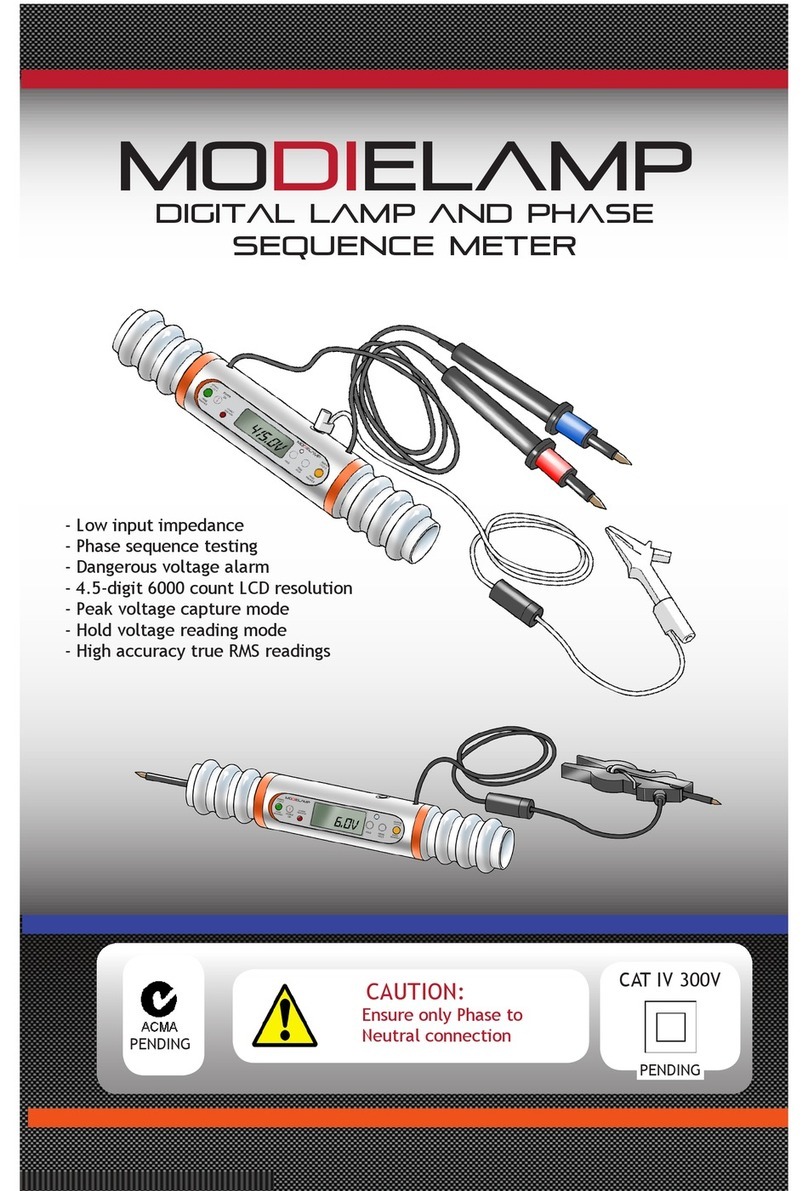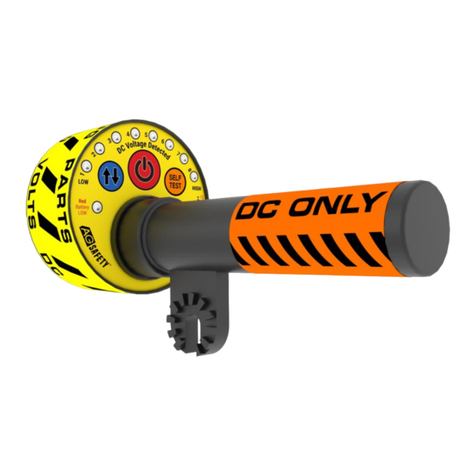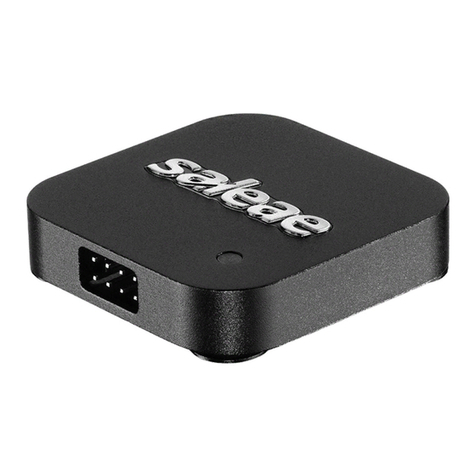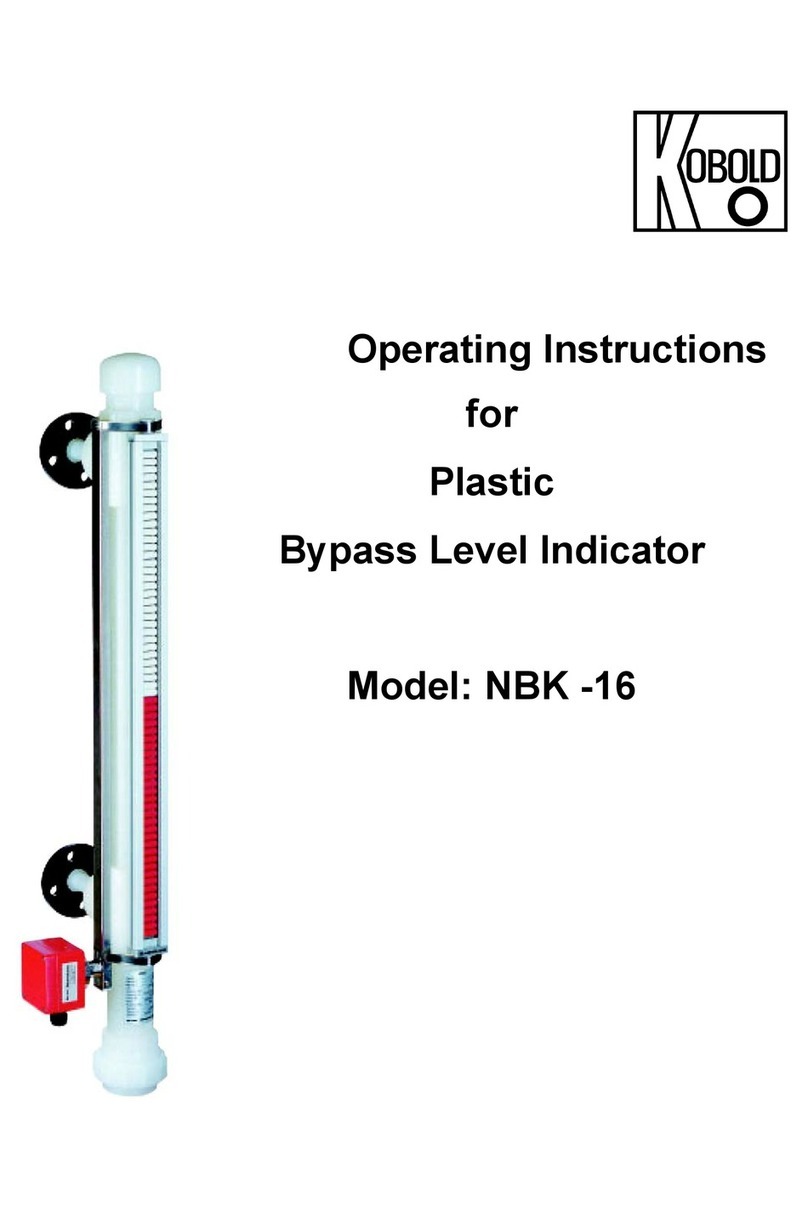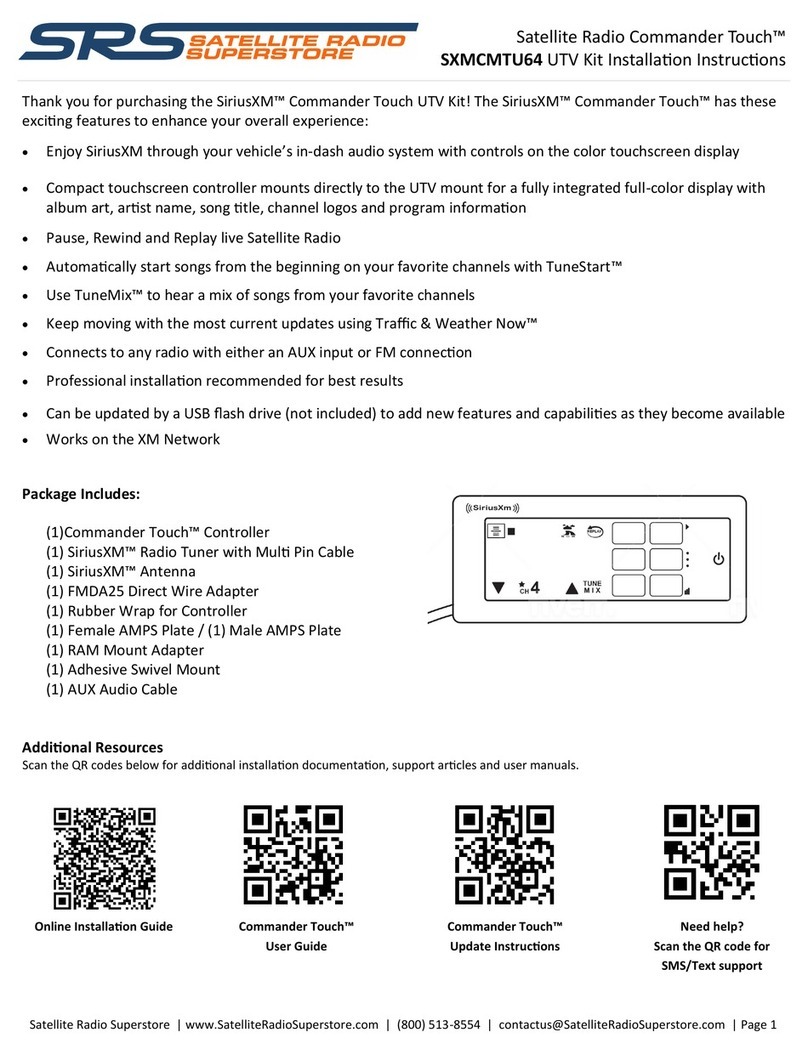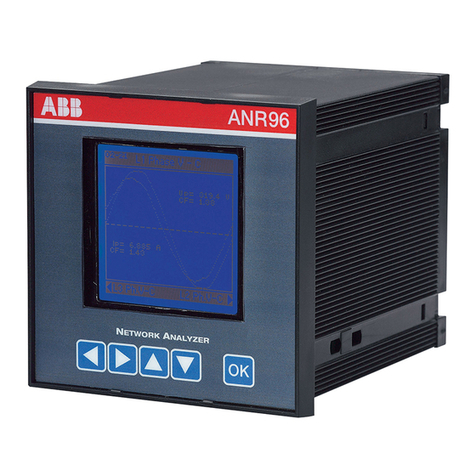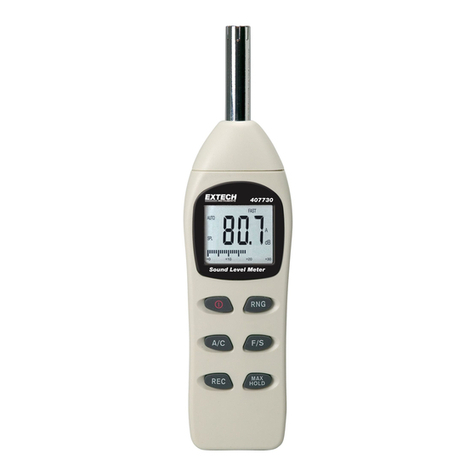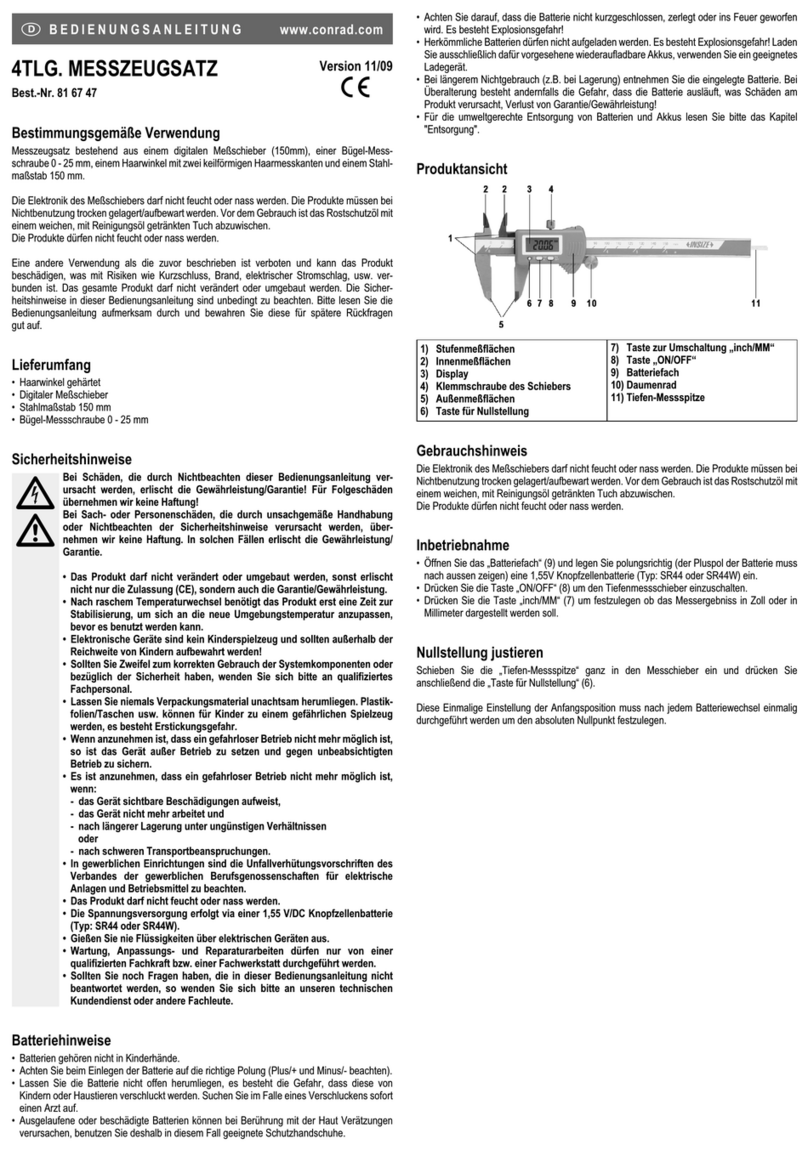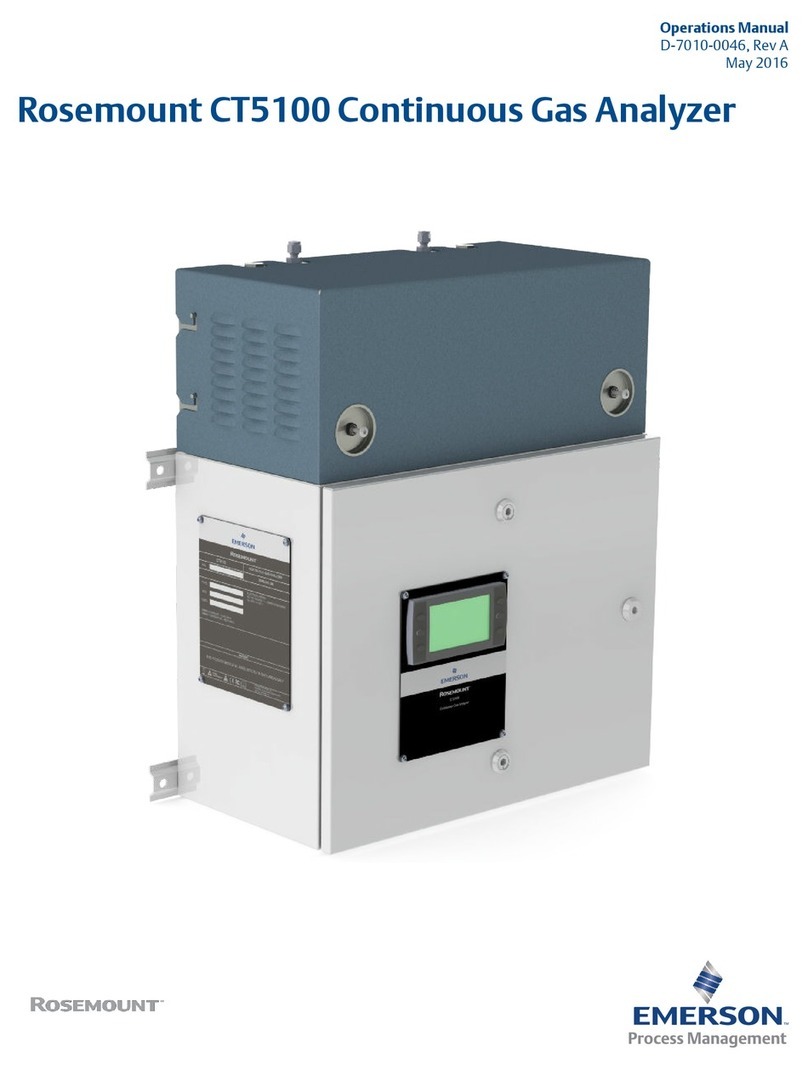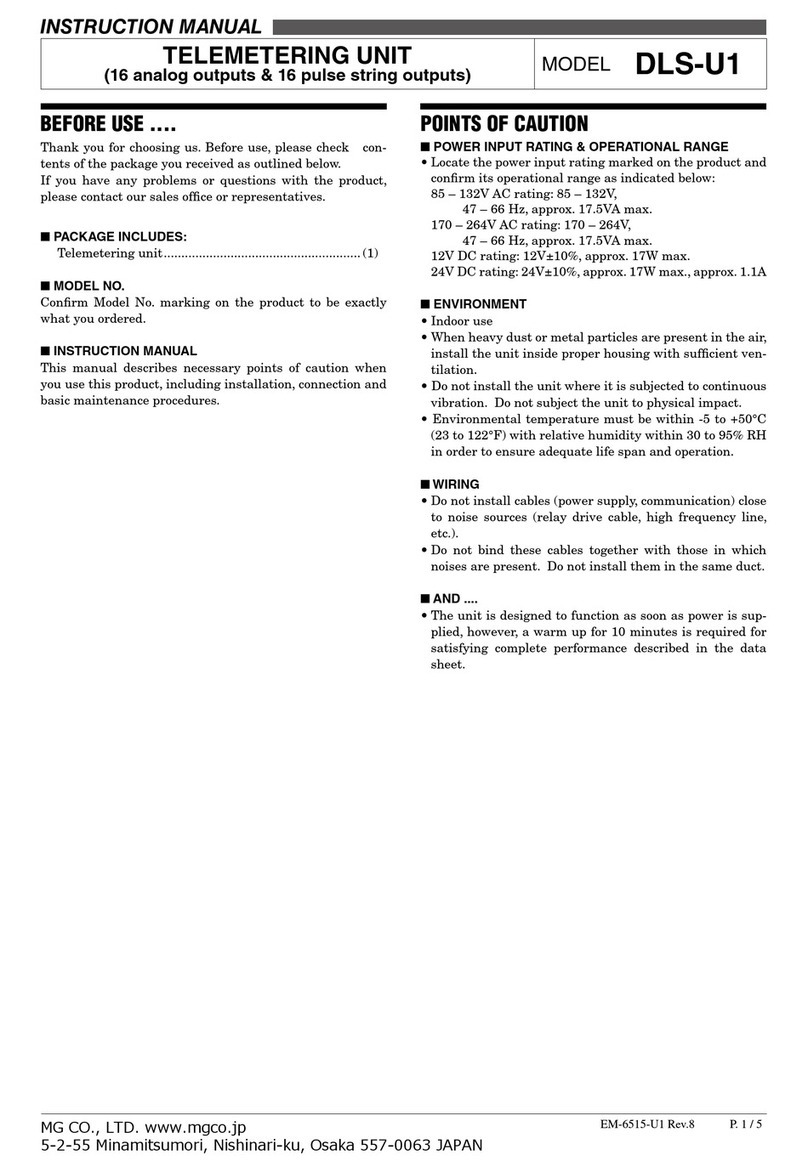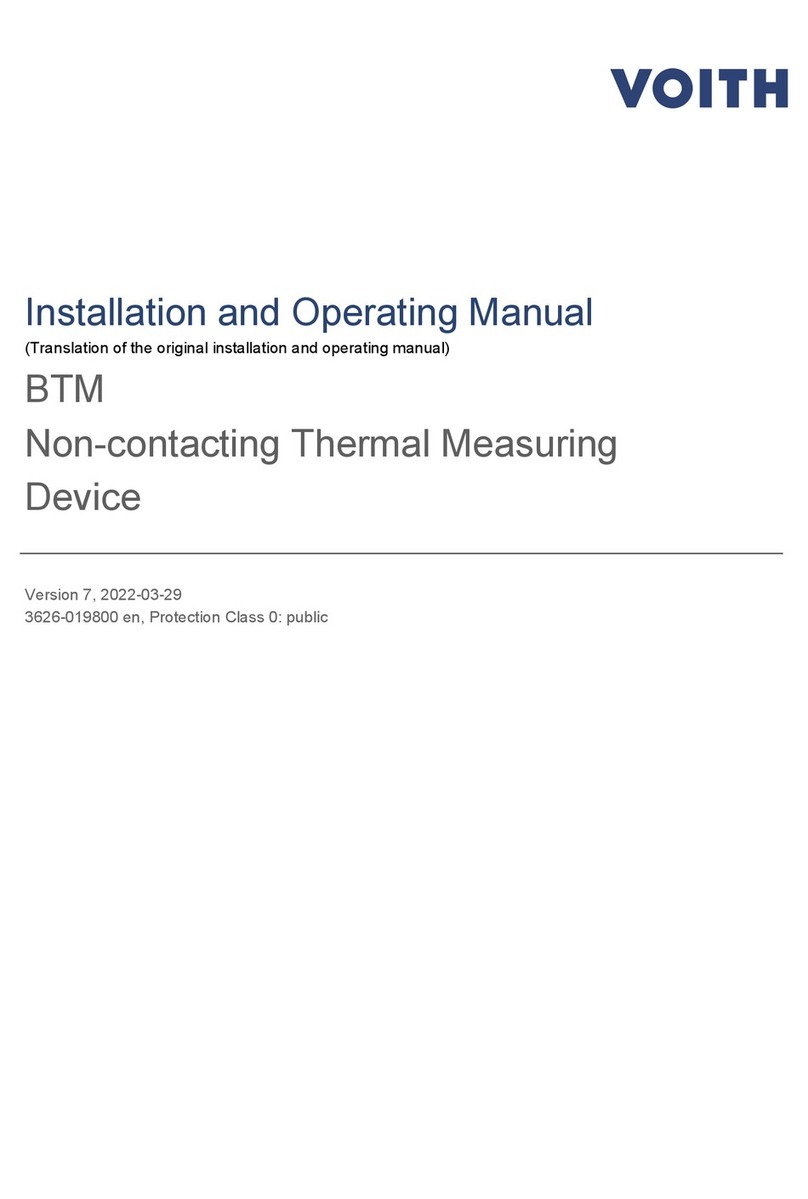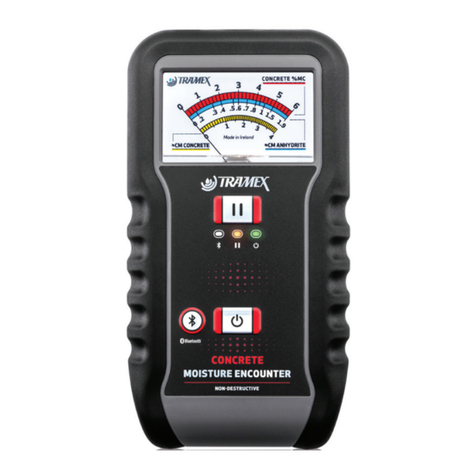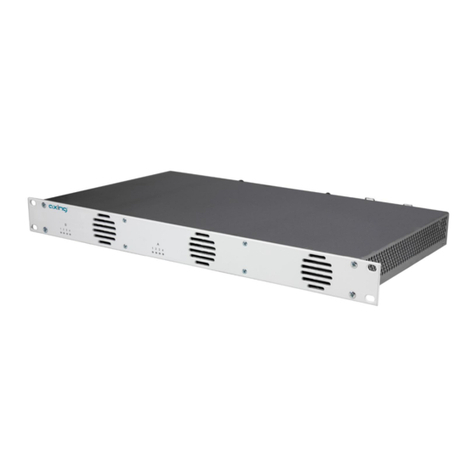GL McGAVIN RESCUE FR50 DC Modiewark User manual

Page | 1
RESCUE FR50 DCModiewark
NON-CONTACT VOLTAGE AND STATIC
INDICATOR PATENT PENDING
TAKE THE TRAINING QR CODE

Page | 2
Warning
High voltage testing should only be carried out by trained
personnel.
Do not hold this instrument in your hand when testing
uninsulated voltages above 300VDC.
Fiberglass Operating sticks must be used.
www.glmcgavin.com.au.
This device is for indication only and should only be used by trained
personnel on the safe operations of the device.
Warning. the indicator will not indicate when conductors are in a high
field area, close proximity to one another, in a metal case enclosed
spaces or in armored metal screen cable.
The DC field can be compromised and the device will not indicate, it is
recommended from the manufacturer if adequate space, approach the
conductor from 360 degrees and on the high setting get within 5 mm.
Before touching conductors prove the conductor is zero volts using
existing convention testing equipment.

Page | 3
MODIEWARK RESCUE TOUCHPAD

Page | 4
MODIEWARK DC RESCUE COMBO KIT
FR50 AND FR 30

Page | 5
RESCUE MODIEWARK DC
UNIT OPERATIONS
Get close enough to the emergency without touching the power
source.
Attached the indicator to an electrical stick IF REQUIRED. Please
see your training requirements, for safety and personal
protection.
Turn on the device, press the Power Button.
A single RED
LED will
illuminate
Press the green ON/Self-Test Button. The unit is now operational.

Page | 6
The SELF TEST button can be pressed at any
time TO TEST the device is functioning correctly.
All LEDS will light and a green light will indicate
the device is ready. If a red light indicates change
the batteries.
By pressing the blue arrow up and arrow down
button, the single RED illuminated LED will
switch between L.E.D 8 and L.E.D 1.
Note: LED 8 is the most sensitive and LED 1 is the least sensitive.
Ground the device either touching the outer black head of the
unit with your hand or close the lid on the metal case and touch
the indicator on the metal case for 3 seconds or until all the
indicator does not indicate a static charge.
Before pointing the indicator at
the potential power source ensure you are standing with
both feet grounded and the indicator is not indicating any
presence of electricity.
You are now able to approach a known power source.

Page | 7
PROBLEM SOLVE
If all the Ledsand
the audio alarm
sound instantly,
ground the cap to
remove static electricity. If the device picks up a signal then you
are in a live DC or a Static Charged field. Press the
and place the device on a lower sensitivity setting.
Turn the unit off and back on again
Touch the cap of the indicator and
with your hand or ground the
indicator by touching the metal case
the indicator comes in. This will
remove any static build up in the
cap.

Page | 8
HOW TO TEST
1.Rub the foam lid of the case with
your hand to build up static electricity
(the more you rub the higher the
voltage charge will be) 2000 volts +
can be generated.
2.Turn the indicator on and approach
the lid, the Indicator will light up as
you approach the lid of the case.
3. If The device if functioning correctly
the indicator will activate as you
approach.

Page | 9
Approach A known live conductor.

Page | 10
As the indicator moves into an electric field the indicators LEDS
from 1 to 8 will illuminate and an audio alarm will sound.
When all of the LEDS up to number 8 are indicated the audio
alarm will be on constant.
Insert the batteries correct polarity + to touchpad.
Whilst Using the Indicator
You may notice
Raising your leg off the ground or walking with the indicator in
your hand, the indicator will indicate a change in field strength.
The indicator once activated uses your body as a passage to
earth.
If you raise your one leg off the ground you have initially reduced
the earth
path by
half. On the
high
sensitivity

Page | 11
setting this is enough for the indicator to alarm.
The indicator is best used by holding the device in a stationary
position whilst testing for the presence of DC.
When entering into a DC field, before you take a reading, stop
and place both feet firmly on the ground, make sure the indicator
is not detecting any DC presence, reach out away from the body
with a straight arm.
If a hot stick is used with the indicator to detect if DC field is
present, ensure the indicator is operational standing firmly and
both feet on the ground, extend the stick until the indicator picks
up a field.
Touching a known conductor
Because the Modiewark rescue indicator can be used on
longer hot stick applications, it is possible for the indicator
to make contact with a live conductor.

Page | 12
This will not damage the indicator, however the static
charge from the object can be transferred on to the cap of
the indicator.
If the indicator is alarming when you remove it from the
field, the indicator is picking up charge in the cap from
touching the conductor.
The Modiewark DC indicator
cap is fitted with static
dissipative plastic.
If you touch a conductor with
the indicator, remove the
indicator away from the
conductor then ground the
cap by touching it with your
hand to remove the static
capacitance.
Alternatively use the metal case the indicator is supplied
with, touch the black end of the indicator onto the case lid
to remove any static charge.
Is the indicator picking up static electricity?
A static charge is on most surfaces.

Page | 13
If you are in an enclosed environment and you turn on
the Modiewark indicator and it activates.
Touch the black dissipative cap and the plate, if it has
made contact with an object it may be statically
charged.
Turn off the indicator
and switch the
sensitivity setting to a
lower setting until the
device is stable and
you are not picking
up a stray field.
Static Electricity 10 volts to
10,000+volts
The Modiewark DC detector is designed to pick up an electric field
emanating from an active DC source as low as 50v dc.
Static electricity can be found on almost any surface.

Page | 14
Static electricity is an imbalance of electric charges within or on the surface
of a material.
The charge remains until the indicator is moved away from the area or by
means of an electric current or electrical discharge.
A static electric charge can be created whenever two surfaces contact and
separate, and at least one of the surfaces has a high resistance to electric
current (and is therefore an electrical insulator).
The effects of static electricity are familiar to most people because it can
be felt, heard and visually seen as a spark as the excess charge is
neutralized when brought close to an electrical conductor, or a region
with an excess charge of the opposite polarity (positive or negative).
The familiar phenomenon of a static shock –more specifically, an
electrostatic discharge –is caused by the neutralization of charge.
Static electricity is everywhere and is all around us. static electricity can be
generated by simply rubbing a piece of plastic on your shirt and removing it.
Dealing with Static charge has been the hardest phase to overcome to manufacture
a indicator.
How to combat static electricity
Once a DC power source is terminated in a plastic insulted cable, but not
earthed (grounded), a static charge remains present on the insulation,
this will slowly dissipate over time.
The Modiewark DC indicator will read this static residue left behind and
over time the indicator sensitivity lights will stop indicating.

Page | 15
From trials conducted it can take up to several minutes for the static
charge to dissipate. The time is dependent on the thickness of the
insulating material and its composition.
Earthing the cable instantly removes the static charge in the cable.
Alternatively, you can Spray the target area with antistatic spray.
Approach the area to be tested, if the device alarms, repeat the process
until the Modiewark DC does not pick up any signal.
If you test where live DC supply is present and the power is turned off,
the indicator will still show a decreasing DC field (static discharge).
If the insulated cable is sprayed with the antistatic spray it will negate
the static charge showing the operator that no potential is present.
Usages
The indicator can be used where DC voltages are present.
Electric trains 1500 vdc
Electric trams 600vdc
Underground mining vehicles 1800 vdc+
Power station’s 50-600 vdc
Control and switch gear 200 vdc

Page | 16
Under sea direct current power lines 1000vdc+
Solar arrays 200 to 1000vdc
Electronic Environment’s where static is an issue.
Aluminum Smelters
Aircraft
DC SPECIFICIATIONS

Page | 17
DC Voltage Detector
Size
225mm Long
Charge Time
2 x batteries 7 Hours
Voltage sensing
range
50 to VDC
Light source
8 high intensity Leds
Sound source
90 db piezo buzzer
Operating
temperature
-20 to 65 C deg
Water
Resistance
IEC IP6X (Safe when exposed to heavy rain).
Weight
750 g
Power System
Rechargeable Lithium-ion battery 1-day life in
rigorous activity.
Battery Life
7 hours
Cap Material
ESD POM (Acetyl) Black
Warranty
1-Year
Handle Material
Glass filled polypropylene
Included in the
Shipment
DC Voltage Detector,6 Batteries, Car Charger,
Charging Lead, Charger, Manuel, Msds, Air
Pump, Storage Case

Page | 18
Safety Information
DC Rescue was designed as a DC Proximity device to eliminate the
dangers of touch testing and earthing. It should be used by trained
and qualified personnel only.
When testing DC circuits always use caution and strictly adhere to
proper safety practices.
Above 500VDC proper high voltage procedures for testing should
apply.
Wearing personal protective equipment is a necessary safety
precaution.
Read the User Manual carefully before using the Indicator.
The DC is a Proximity device but if it should ever make contact
with a live DC conductor no harm to the Indicator will occur but
the Indicator cap will need to be touched to dissipate the Static
charge.
Prior to using DC in the field, make sure to test and verify that
sensitivity settings are suitable for testing in that location.
Always check that the DC is working before using it in on site.
The risk of electrocution is paramount in and around high
voltage.
Overview

Page | 19
DC Rescue is a non-contact DC voltage detector that alerts users
when they approach an electrified source. Its advanced
notification system is designed to warn the user of the presence of
voltage and current within a proximate area. DC internal sensors
were designed to detect both electrical (V/m) and magnetic (T)
fields. Radiated electric and magnetic fields increase with higher
distribution voltages and decrease with distance and/or shielding.
Once an energized source is detected, the user is notified first by
LED lighting of the approximate distance and then is followed by
indicating piezo buzzer. These warnings are shown to the user by
the line of LED lights.
Typical Uses
Identify live conductors.
Detect residual or induced voltages.
Identify energized lines after power outages.
Find energized lines underground.
Detect energized threats after natural disasters.
A Product of
www.glmcgavin.com.au
All rights reserved © 2018 WARNINGS

Page | 20
DC only detects DC Voltage.
Every energized DC conductor is surrounded by an electric field.
As you move closer to the conductor, the electric field will become
stronger.
Lower voltages have a weaker field strength and will have a shorter
warning distance.
Electric fields that have a stronger field strength, will have a greater
warning distance.
Underground PRIMARY cables are both insulated and shielded. The shield
is a conductor, it is grounded, and will nullify the electric field.
Moulded cable terminators such as elbows - like the cables they are
installed on - are both insulated and shielded and will nullify the electric
field.
Live conductors lying on the ground should be tested where they leave the
earth situation for test confirmation.
Electric fields will couple to the ground thus drastically reducing warning
distances.
Treat all conductors as “live” unless or until there is a visible break from a
live source and a ground is in place.
Always use proper high voltage procedures, including personal protective
equipment, when working near or around high voltage equipment or
conductors.
Before using DC Rescue in hand, learn the proper holding method. Not
using the proper positioning will prevent voltage from being detected.
Warning distances will be greatly reduced in high humidity and rainy
environments.
Never submerge in water. If fully submerged, moisture could enter the
enclosure and damage detection sensors leading to reduced warning
distances or failure to detect a “live” voltage.
Limited Warranty and Limitation of Liability
Table of contents
Other GL McGAVIN Measuring Instrument manuals
